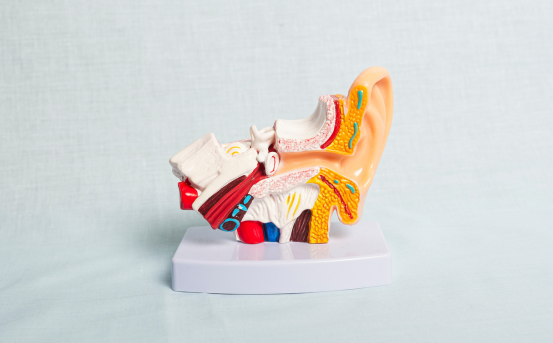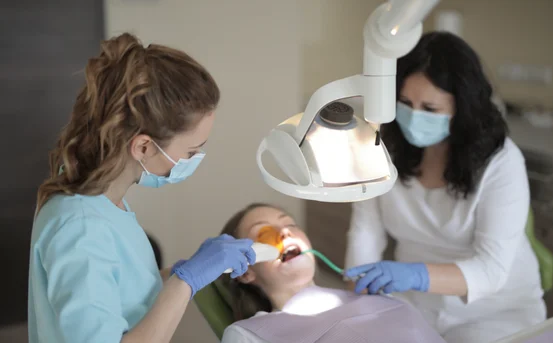Ear drum repair surgery, also known as tympanoplasty. This advanced surgical procedure is designed to restore the integrity of the eardrum, eliminate recurring infections, and significantly improve hearing.
Your ears are vital for hearing, balance, and overall quality of life. But when something goes wrong like a hole or tear in the eardrum it can lead to serious complications. You might notice hearing loss, persistent ear infections, ear pain, or even fluid discharge. These symptoms are not just uncomfortable they can also impact your everyday life, making it harder to communicate, work, or enjoy simple pleasures like listening to music or engaging in conversations.
What Is Ear drum Repair Surgery?
Eardrum repair surgery (tympanoplasty) is a surgical procedure to close a perforation or hole in the eardrum (tympanic membrane). It is performed by an ENT (Ear, Nose, and Throat) specialist to restore the structural integrity of the eardrum and improve hearing function.
This surgery may also involve repairing or reconstructing the ossicles (tiny bones in the middle ear), depending on the extent of the damage.
Who Needs Ear drum Repair Surgery?
You may be a candidate for eardrum repair surgery if you :-
-
Have a chronic ear infection
-
Suffer from hearing loss due to a perforated eardrum
-
Experience ear drainage or discharge
-
Have suffered trauma or injury to the ear
-
Had unsuccessful healing after an earlier eardrum perforation
Often, small eardrum tears heal on their own. However, larger or persistent perforations usually require surgical intervention.
Causes of Ear drum Damage
Understanding what leads to a perforated eardrum helps in preventing future complications. Common causes include :-
-
Chronic ear infections
-
Barotrauma from flying or diving
-
Sudden loud noises (acoustic trauma)
-
Insertion of foreign objects like cotton swabs
-
Head injuries
Types of Ear drum Repair Procedures
There are different surgical techniques used to repair the eardrum. The choice depends on the size and location of the perforation, and whether the middle ear bones are also affected.
Myringoplasty
This is a minor surgical procedure where a small hole in the eardrum is patched using a graft, often taken from the patient’s own tissue. It’s usually done when there’s no active infection and the middle ear bones are intact.
Tympanoplasty
A more comprehensive surgical repair, tympanoplasty is performed under general anesthesia. The surgeon removes any infected tissue, places a graft to close the perforation, and may also reconstruct the ossicles if needed.
Benefits of Ear drum Repair Surgery
Choosing to undergo eardrum repair surgery can lead to significant health improvements. Key benefits include :-
-
Improved hearing
-
Prevention of recurring infections
-
Reduced ear discharge
-
Protection of middle and inner ear structures
-
Better quality of life due to restored ear function
Preoperative Preparation
Before undergoing eardrum repair surgery, your ENT specialist will conduct several evaluations, including :-
-
Hearing tests (audiometry)
-
Ear examination using an otoscope or microscope
-
CT scan (if necessary) to assess deeper structures
You may be advised to :-
-
Avoid smoking, as it impairs healing
-
Discontinue blood-thinning medications
-
Fast for several hours before surgery
Always follow your doctor’s specific instructions.
The Surgical Procedure: What to Expect?
Eardrum repair surgery typically lasts between 1 to 2 hours and is done under general or local anesthesia. Here’s a general overview :-
-
The surgeon makes an incision behind or inside the ear canal.
-
Infected or damaged tissue is carefully removed.
-
A graft, often taken from the temporalis fascia (tissue near the ear), is placed to close the perforation.
-
The surgical site is closed, and the ear is packed with medicated gauze.
The procedure is usually done on an outpatient basis, meaning you can go home the same day.
Post-Surgery Recovery Tips
Initial Recovery Period
-
Mild pain, discomfort, or dizziness is common.
-
Avoid getting water in the ear for at least 2–4 weeks.
-
Refrain from blowing your nose, as it creates pressure.
-
Take prescribed medications regularly, including antibiotics and painkillers.
Follow-Up Visits
Your ENT specialist will remove packing and evaluate healing during follow-up appointments, usually scheduled within 1–2 weeks after surgery.
Back to Normal Activities
Most patients resume work or school within 1 to 2 weeks, but strenuous activities, swimming, and flying should be avoided for several weeks.
Risks and Complications
As with any surgical procedure, there are potential risks, although complications are rare when the surgery is performed by an experienced ENT surgeon. Possible risks include :-
-
Infection
-
Hearing loss
-
Graft failure or re-perforation
-
Dizziness or balance issues
-
Tinnitus (ringing in the ear)
Discuss all concerns and risk factors with your doctor beforehand.
Success Rate of Ear drum Repair Surgery
Eardrum repair surgery has a high success rate, with most studies showing a 90–95% graft success and significant hearing improvement in patients.
However, outcomes depend on factors such as :-
-
The size of the perforation
-
Age and overall health of the patient
-
The presence of active infection
-
Surgical technique and expertise
Tips for Long-Term Ear Health After Surgery
-
Avoid ear trauma and inserting objects into the ear.
-
Use earplugs when swimming (after doctor’s clearance).
-
Keep your ears dry and clean.
-
Follow up with regular ENT checkups, especially if you’re prone to ear infections.
-
Treat nasal allergies and colds early to prevent Eustachian tube dysfunction.
Conclusion
A damaged ear drum doesn’t have to affect your life forever. Eardrum repair surgery is a safe, effective, and widely performed procedure that restores ear function, prevents infections, and significantly improves hearing quality.























